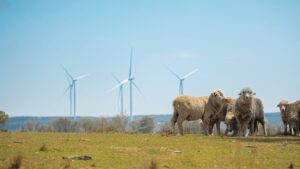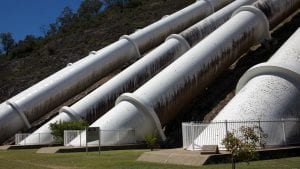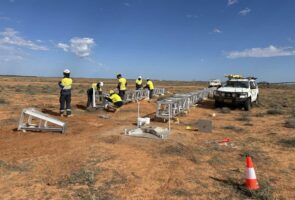The renewable state of South Australia has recorded the lowest average wholesale prices on Australia’s main grid for the second month in a row, once again due to its dominant share of wind and solar which provided nearly two thirds of state demand.
According to data provided by the Australian Energy Market Operator, South Australia’s average wholesale price for the month of November was $50.86 per megawatt hour, which is about half its average of the previous financial year, and 20 per cent below the next best for the month, Queensland.
The price delivered in South Australia was almost 40 per cent cheaper than in Victoria, NSW and Tasmania, and came in a month where 59 per cent of the total generation came from wind and solar, and met 66.2 per cent of local demand.
In October, the state of South Australia – which now has a target of “net 100 per cent renewables” to be met by around 2030 – also posted the lowest wholesale prices in Australia’s main grid.
This is a significant achievement, because South Australia has long had the highest prices in Australia, which caused the state-owned utility to investigate wind power way back in the 1970s.
That wasn’t much of an option then, but now that both wind and solar are clearly the cheapest form of new generation, and cheaper and cleaner than even much of existing generation, the renewables are now coming on to the market at a scale where they can make a difference – even in South Australia where the market is traditionally dominated by just a few big players with considerable market power.
This table from AEMO (above) shows the average price over the month of November.
Dylan McConnell, from the Climate and Energy College in Melbourne, offers different data (table below), showing the “weighted” volume average for the month.
 This still shows South Australia to be the cheapest on the main grid for the second month in a row, but takes into account the fact that more volume may have been produced when prices were high (in all states).
This still shows South Australia to be the cheapest on the main grid for the second month in a row, but takes into account the fact that more volume may have been produced when prices were high (in all states).
Wind made the largest contribution in November with 45.4 per cent, with rooftop solar providing 17.1 per cent and large scale solar 3.7 per cent. Various forms of gas generation provided the rest, with battery storage charging when prices low and generating only at peak times.
This graph from OpenNem.org.au gives an indication of the day-by-day contribution of the main sources – solar (yellow), wind (green) and gas (shades of orange). Purple indicates imports, but any generation below the zero dotted line indicates exports.
South Australia exported more than twice as much (126 gigawatt hours) than it imported (58GWh) during the month. When it did import, it was because the prices in Victoria were cheaper than gas generation in South Australia. It was not forced to import because of any supply shortfall.
This is the first time that RenewEconomy can find that South Australia has posted the lowest prices for two consecutive months (glad to be corrected if someone has better access to data).
It’s not likely something that will continue over summer, when soaring temperatures and increased demand will require more gas generators to be switched on, who will then set the price rather than wind or solar, and the price will go higher.
But as dispatchable generators come into the market – either more batteries, the first pumped hydro projects, and the two “back-up diesel generators are converted to gas and become “market players”, further downward pressure will occur on prices.
And then there are other initiatives – the proposed new transmission link to NSW that will unlock a raft of new big wind and solar projects, backed up with storage, in South Australia, and the introduction of synchronous condensers next year, which will reduce the need for the market operator to “direct” gas generators to switch on to maintain system strength.
But here’s two more graphs from McConnell that help to put things in perspective.
 The first is that these low prices are not the result of a collapse in overall demand. McConnell’s data show it is little changed from the same month last year, when the average price in South Australia in November, 2018, was twice the price of November, 2019, at $98/MWh., according to AEMO data.
The first is that these low prices are not the result of a collapse in overall demand. McConnell’s data show it is little changed from the same month last year, when the average price in South Australia in November, 2018, was twice the price of November, 2019, at $98/MWh., according to AEMO data.
The last graph (above) is a bit harder to understand, but essentially plots demand minus wind and solar, and compares it to the same month last year.
The ig take-away: In November, renewable energy was providing all of SA’s demand – (and exporting the difference) – more than 25 per cent of the time! “Not bad,” notes McConnell. No wonder the average wholesale prices have come down.
See also: The day rooftop solar met two thirds of South Australia’s total demand
And: South Australia’s stunning renewable energy transition, and what comes next










